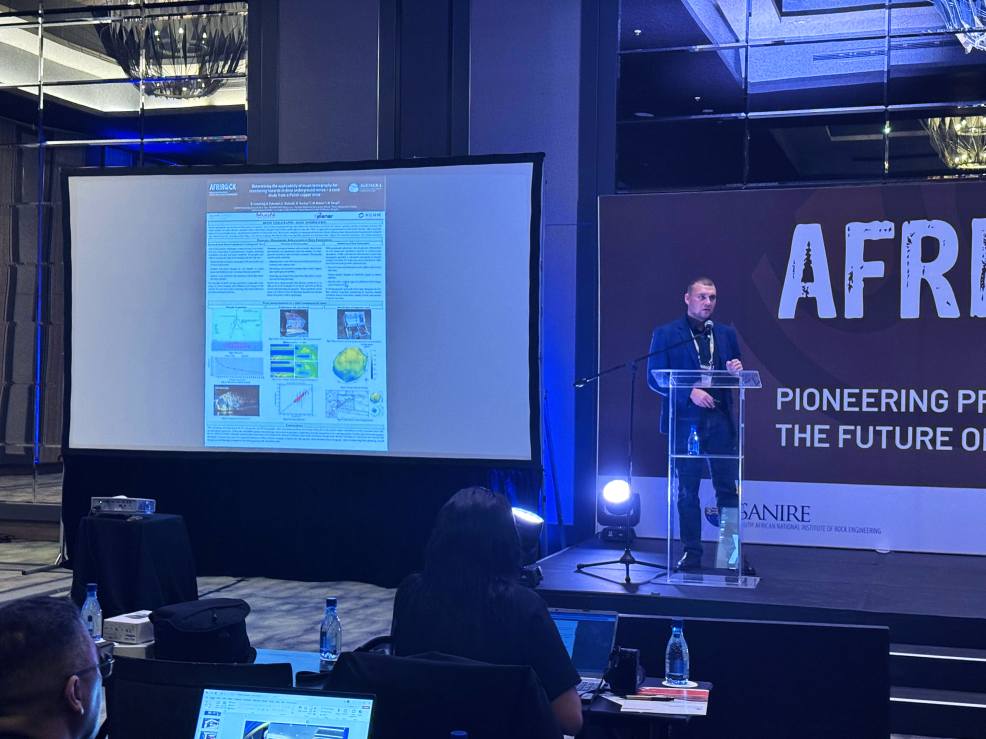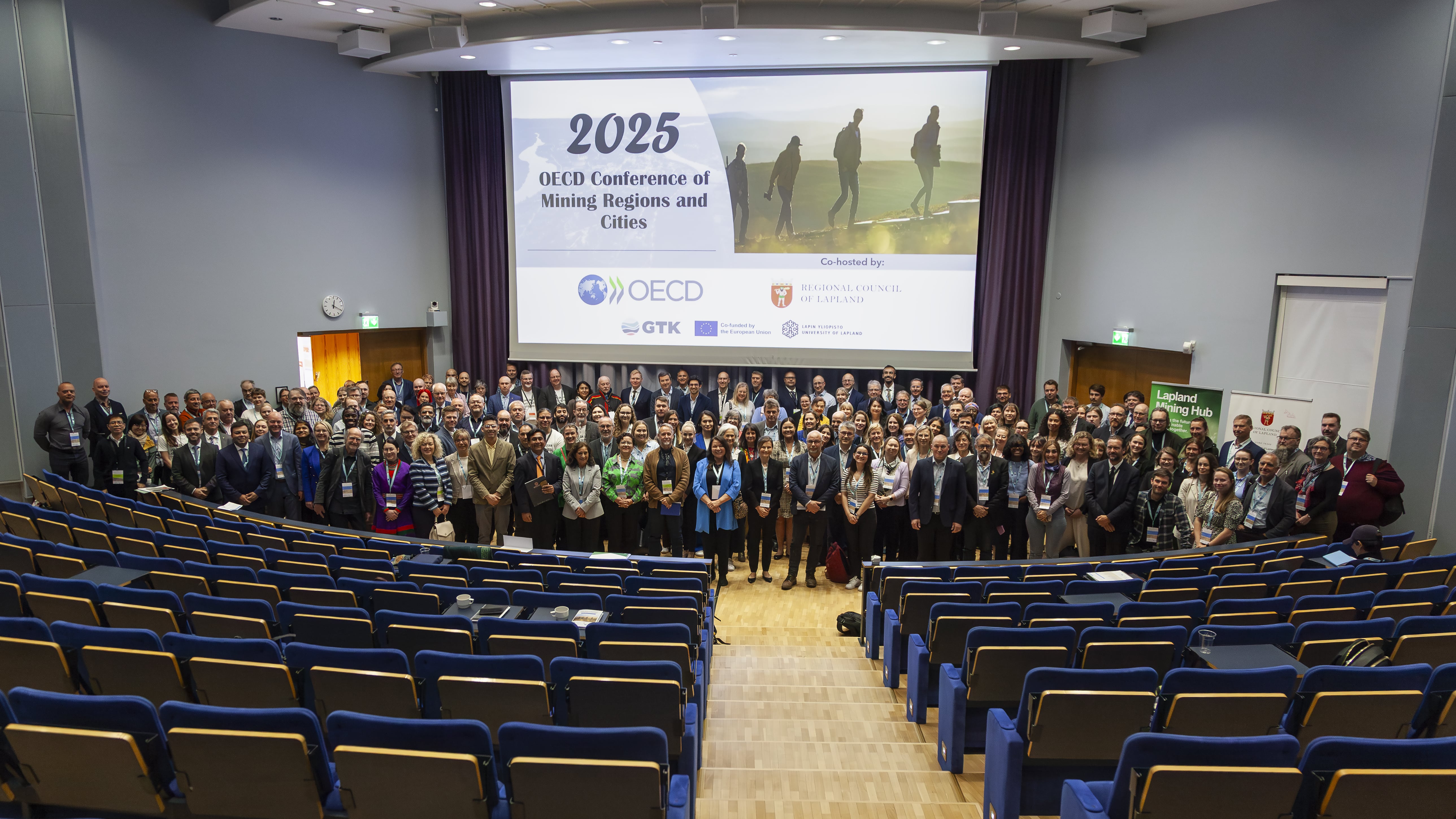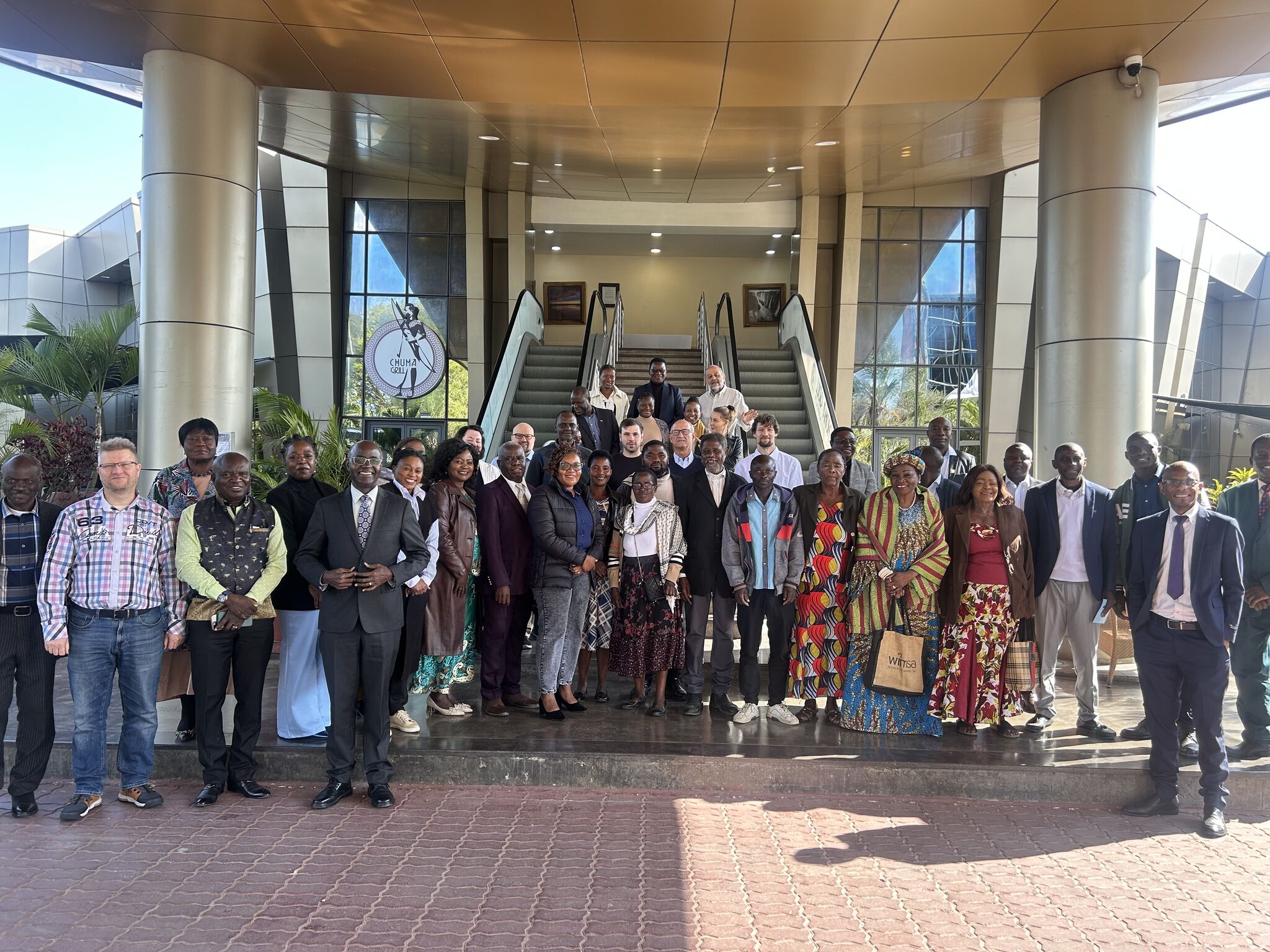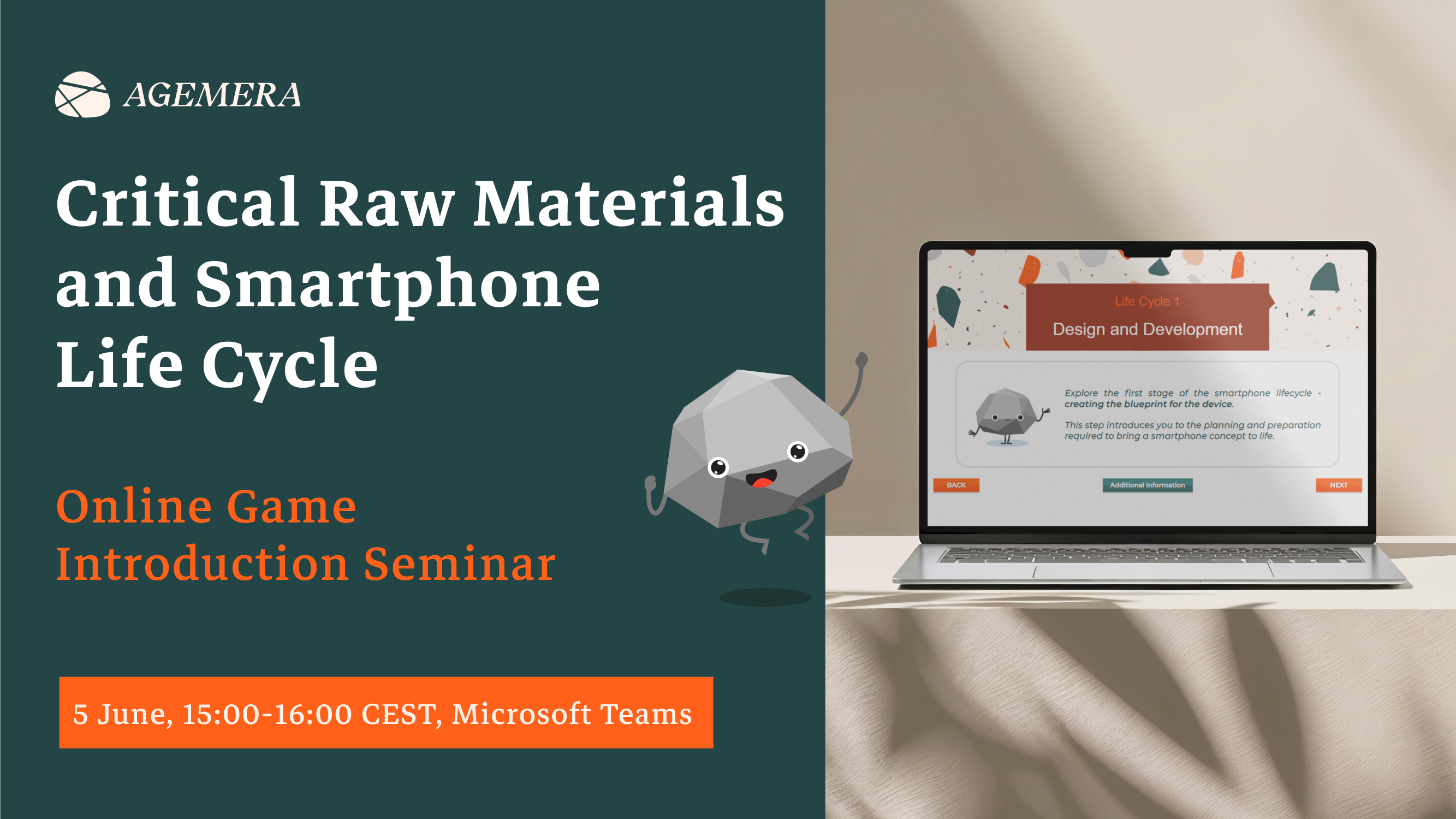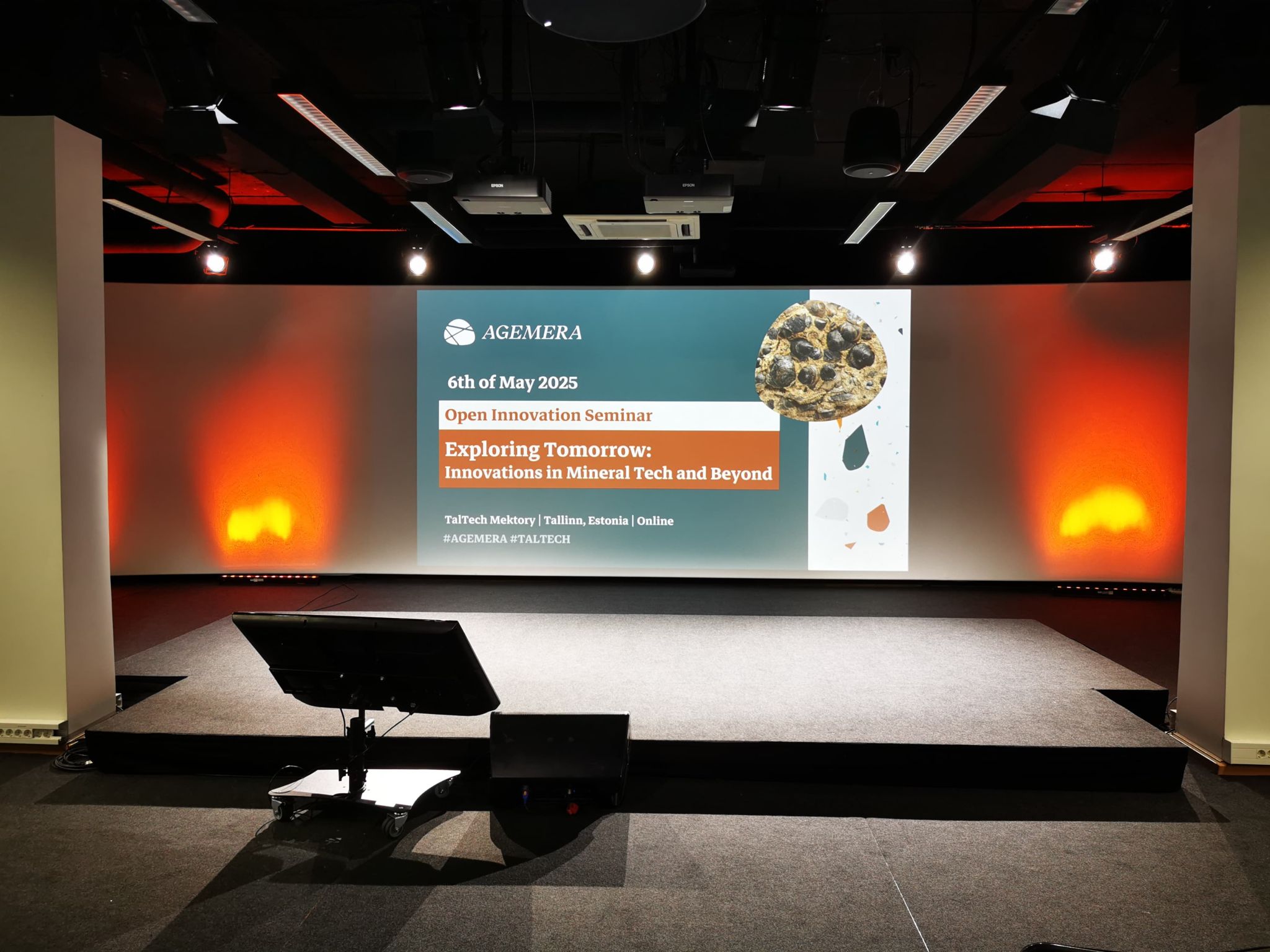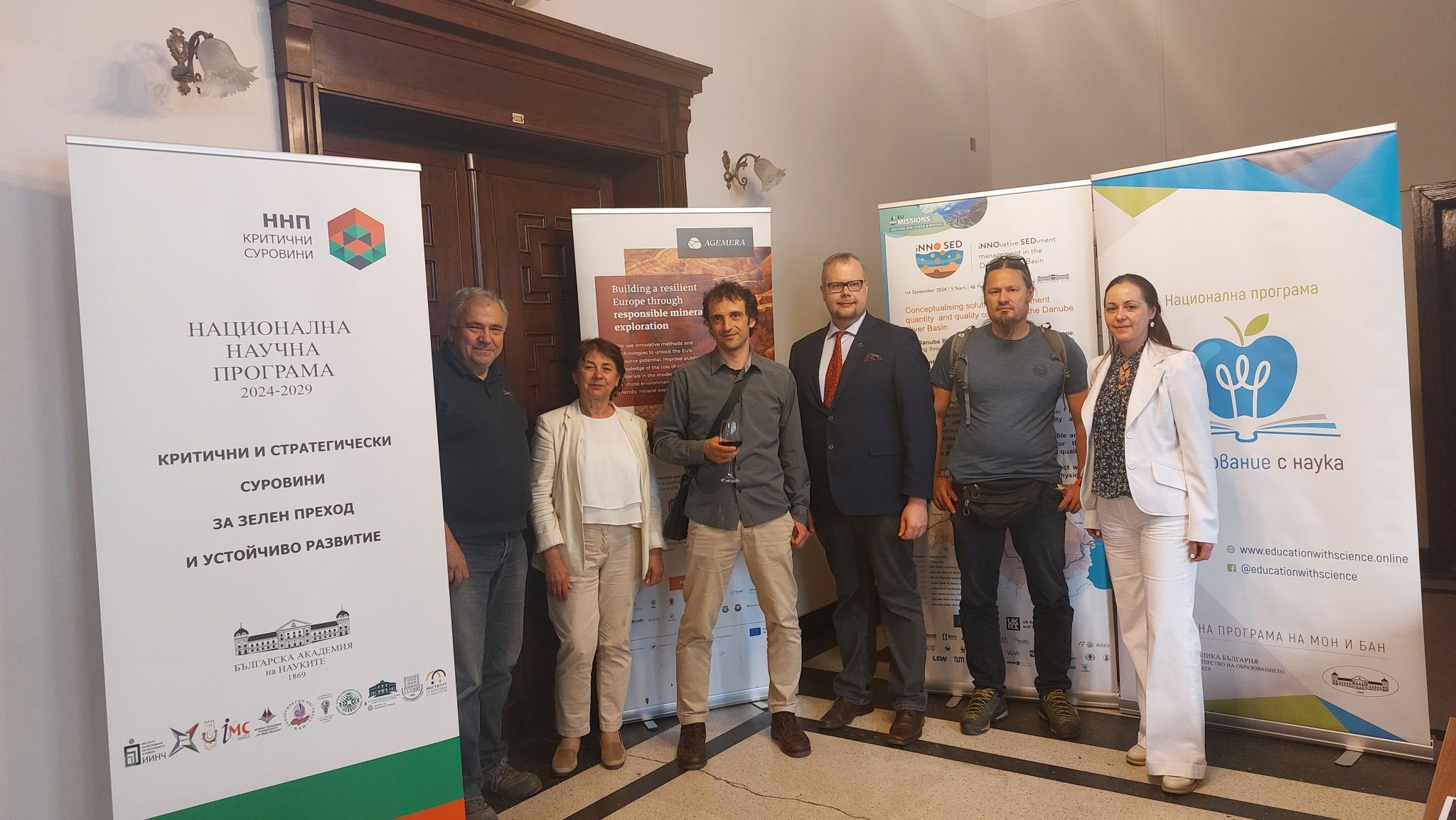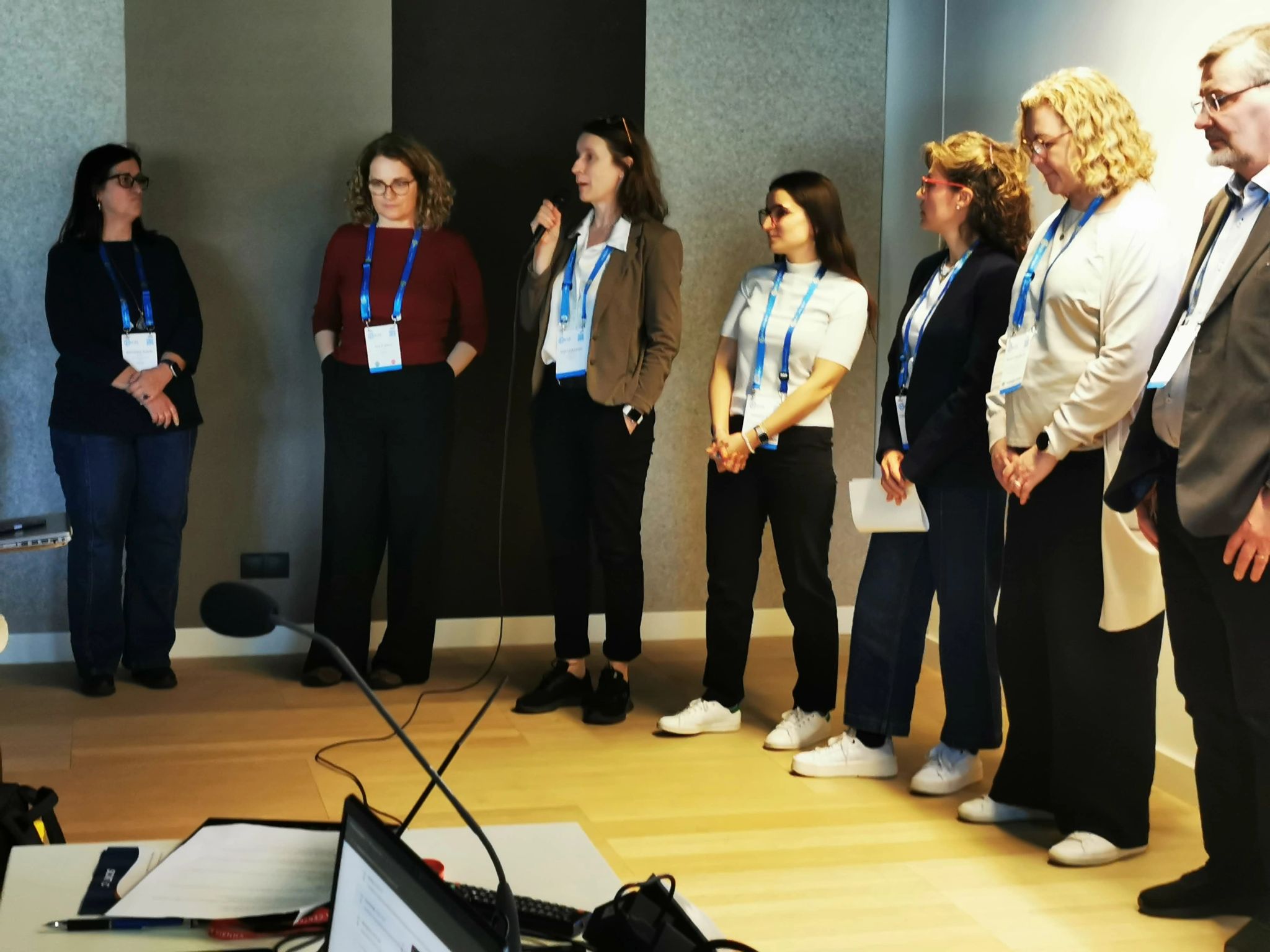Press Release: Europe and its green and digital transition: where and how to get the necessary critical raw materials?
The EU's green and digital transition goals are vital for reducing Europe's carbon dioxide emissions. Among these goals are the electrification of mobility, the transition from coal-based energy production to renewable energy sources, and the development of new technologies and techniques for storing and distributing clean energy. However, producing clean technologies requires huge amounts of metals and minerals. The international AGEMERA project, led by the University of Oulu, Finland, will find out how this can be done following the requirements of the green transition. The project has received funding of 7.5 million euros. At the University of Oulu, October 4-7, 2022, more than 50 consortium members participated in the project kick-off event.
The AGEMERA project studies, for example, what concerns people have with mineral exploration so that mining companies can operate in a socially accepted, responsible and sustainable manner. In addition, the project supports the EU's autonomy concerning critical raw materials. The project aims to increase awareness of the essentiality of critical raw materials as an enabler of the green and digital transition.
"Even though the recycling of raw materials is constantly being developed, there is a consensus that new production of raw materials is also urgently needed. In addition, some of the necessary raw materials, such as magnesium, neodymium, vanadium, cobalt and lithium, are considered critical for the EU in terms of economy or availability," says project director Jari Joutsenvaara from the University of Oulu.

Agile Exploration and Geo-modelling for European Critical Raw materials (AGEMERA) project
director Jari Joutsenvaara from the University of Oulu's Kerttu Saalasti Institute says that the project focuses on
examining the potential of critical raw materials in Europe with the help of new advanced mineral exploration methods
and modelling of mineral systems. Photo: Minna Kilpeläinen
Currently, European production of many critical raw materials is less than 3 per cent of the EU's own
needs, which makes the EU highly dependent on imports from China, Russia and third-world countries. Recycling and
circular economy can contribute to supply to some extent, but not enough to meet future needs. For example, in the
European Commission's report (Critical Raw Materials for Strategic Technologies and Sectors in the EU2020), it is
estimated that electric vehicle batteries and energy storage solutions would need 18 times more lithium and 5 times more
cobalt at the EU level by 2030 and 60 times more lithium and 15 times more of cobalt by 2050 compared to current
consumption.
Horizon Europe finances the 20 partners' project

Experts from universities, research institutes, mining companies and deep-tech companies had a lively discussion at the joint project meeting at the University of Oulu's Linnanmaa campus. Photo: Attila Nemethy
AGEMERA, coordinated by the University of Oulu's Kerttu Saalasti Institute, is a Horizon Europe-funded project that helps the EU achieve its goals and supports the EU's autonomy concerning critical raw materials. The purpose of the project is to increase awareness of the essentiality of critical raw materials as an enabler of the green and digital transition; the second goal is to identify the potential of critical raw materials in Europe, and the third is to promote the introduction of the UNFC (United Nations Framework Classification) and UNRMS (United Nations Resource Management Systems) framework programs for the mineral sector in relation to the production, procurement and management of minerals. The project involves a total of 20 partners from 11 countries. There are universities, research institutes, mineral exploration and mining companies and companies in the deep-tech sector.
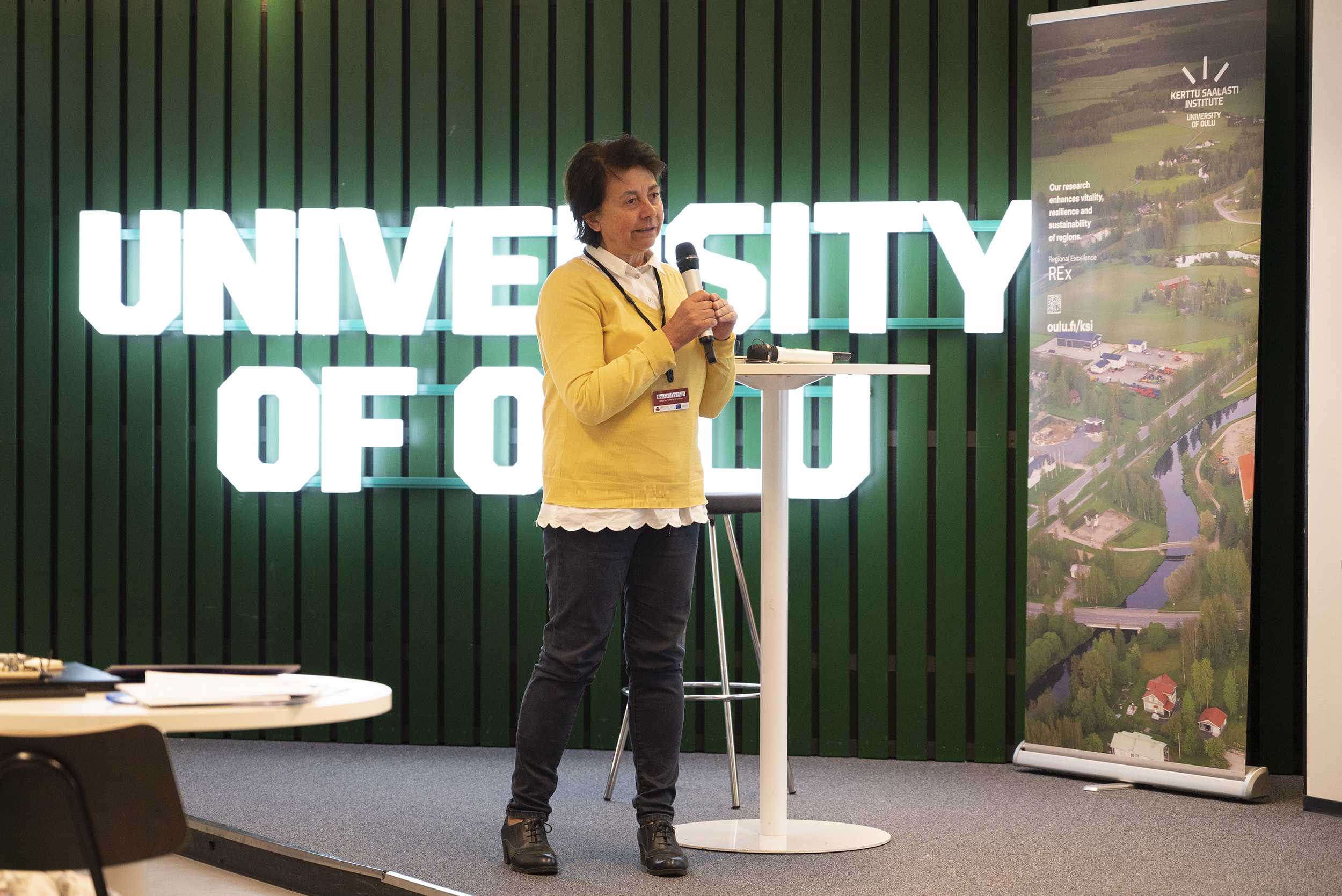
Professor Irena Peytcheva from the Geological Institute of the Bulgarian Academy of Sciences. Photo: Minna Kilpeläinen
Professor Irena Peytcheva from the Geological Institute of the Bulgarian Academy of Sciences, Sofia, is a geochemist by background. In the project, she focuses on examining the potential of critical raw materials, the link between mineral chemistry and geochemistry with novel geophysical methods and what kind of mineral exploration procedures could be used in the future.
"In Bulgaria, we have traditional raw materials such as copper, but also, for example, cobalt, cadmium and other raw materials as trace elements in the ore and hydrothermal alteration minerals of the porphyry-copper systems. I am interested in what kind of novel methods can be used to search for ore deposits that may contain critical raw materials," said Peytcheva.
For her, the most rewarding result of the project would be to gain an understanding of the social effects of mineral exploration.
"It is important that we have a team in the project that focuses on these social effects. This way, we can reach as many people as possible and get information for both the mining industry and the academic community about why people think positively or negatively about mining and what factors influence them," said Peytcheva.
New technologies and methods
Deep-tech company OPT/NET BV has developed an artificial intelligence platform to speed up data processing, modelling and training models with as little human input as possible. The platform can be used, for example, in the mining industry. The AGEMERA project gives the company a versatile opportunity to get familiar with completely new technologies, such as muography, in a large consortium.
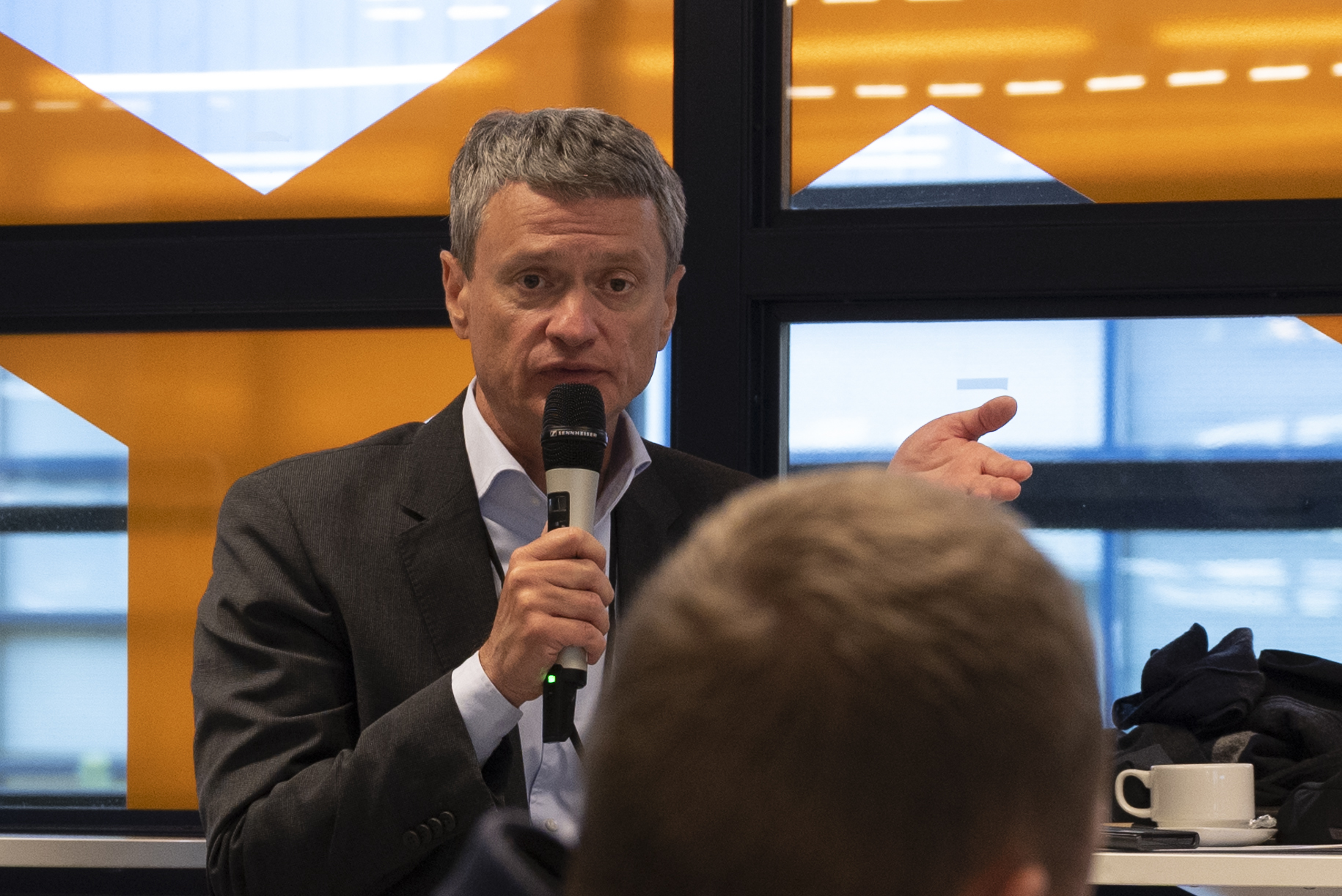
Taras Matselyukh, CEO OPT/NET BV. Photo: Minna Kilpeläinen
"I think the big challenge in this project is that we are working with completely new datasets produced by advanced technologies. Electromagnetic sensors and muon detectors are new technologies for us. We need to study the data and develop visualisation and analysis techniques. I am sure that the project will be successful because of the large number of participants and the great expertise in the consortium. Of course, we hope to create a new product and commercialise it," OPT/NET CEO Taras Matselyukh said.
In the project, the selected areas are investigated using three new methods that do not damage the site or cause environmental harm. One of the ways is to use passive seismic studies, where rock vibrations are observed (Lithica SCCL company from Spain). Another is to survey the area from the air with a drone equipped with a multi-sensor system (Radai Oy from Finland). This way, the object's magnetic, radiometric and electromagnetic properties will be characterised. The third way is to find out the density of the rock with cosmic-ray muography (Muon Solutions Oy from Finland). It detects elementary particles called muons that penetrate rocks and stop at denser spots. In addition, the project develops new machine learning algorithms, the purpose of which is to help the work of analysing multidimensional geoscientific data. The project also promotes the implementation of the UNFC and UNRMS (United Nations Resource Management System) framework programs through partners, stakeholders, courses and public events. The framework programs aim to manage and use mineral resources sustainably.
"International EU projects can be excellent opportunities for both early-stage and SMEs. The projects enable companies to test technology and service development, product functionality and commercial interest by utilising the international project partner network and, of course, to get references and customer stories relevant to launching products. It is often felt that the companies do not have the resources for application and project coordination. However, they can also be involved as part of an international consortium," comments project coordinator Jari Joutsenvaara.
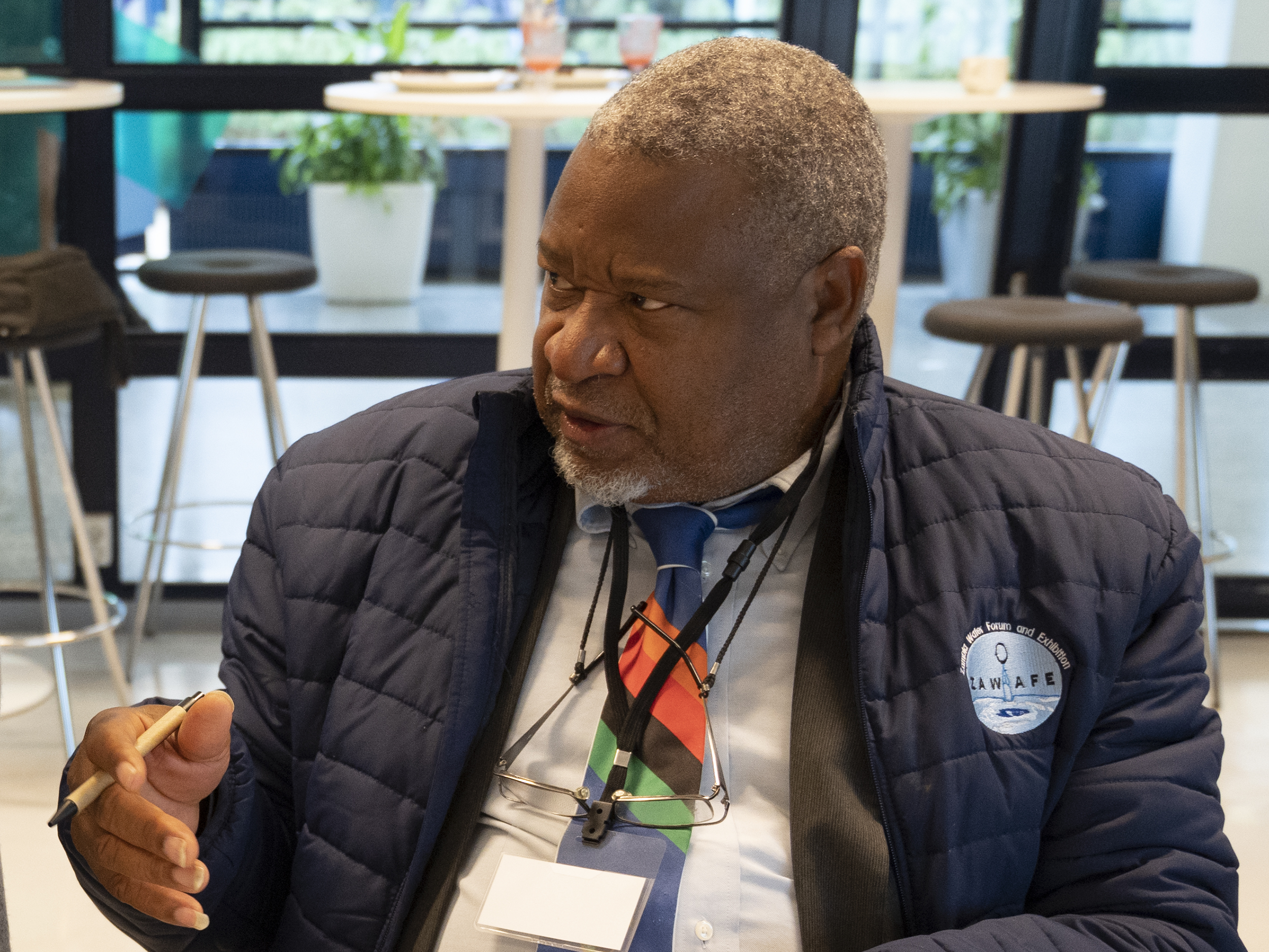
Professor Imasiku Nyambe from the University of Zambia. Photo: Minna Kilpeläinen
For Imasiku Nyambe, Professor of Geology at the University of Zambia, it is important to be able to test new technology.
"We want to be able to test the technologies developed by our Northern colleagues. The challenge is to convince the mining companies and the Zambian government so that we can get to the places where they can be tested. The best result is, of course, that the technologies also work," Nyambe said.
According to Nyambe, the President of Zambia has encouraged the search for critical raw materials in Zambia. The goal is to establish battery production for electric cars in Zambia. Nyambe says that the attitudes of Zambians today are positive towards the search for raw materials because they want to switch from cars that use fossil fuels to electric cars that save the climate.
The focus is on the concerns of local residents
The opening of new mines in Europe is not an everyday event, and in many countries, there has been no mining at all in the current generations. The areas and places are full of memories that are important to people, part of the cultural environment and valuable in terms of nature and landscape values. An old mining area can be an excellent example of a cultural environment. The AGEMERA project maps people's different types of concerns related to ore exploration or even the possible (re)starting of mining operations in areas that are important to them. Identifying and valuing fears is part of responsible operational planning and implementation.
University lecturer in Environmental sociology Leena Suopajärvi and University researcher Hanna Lempinen from the Faculty of Social Sciences of the University of Lapland are responsible for implementing social license and sustainability surveys in the AGEMERA project.
"The purpose is to examine how acceptable these mineral exploration projects are and how prospecting and possible mining affect the sustainability of the localities in question and this sustainability debate in general," Suopajärvi said.
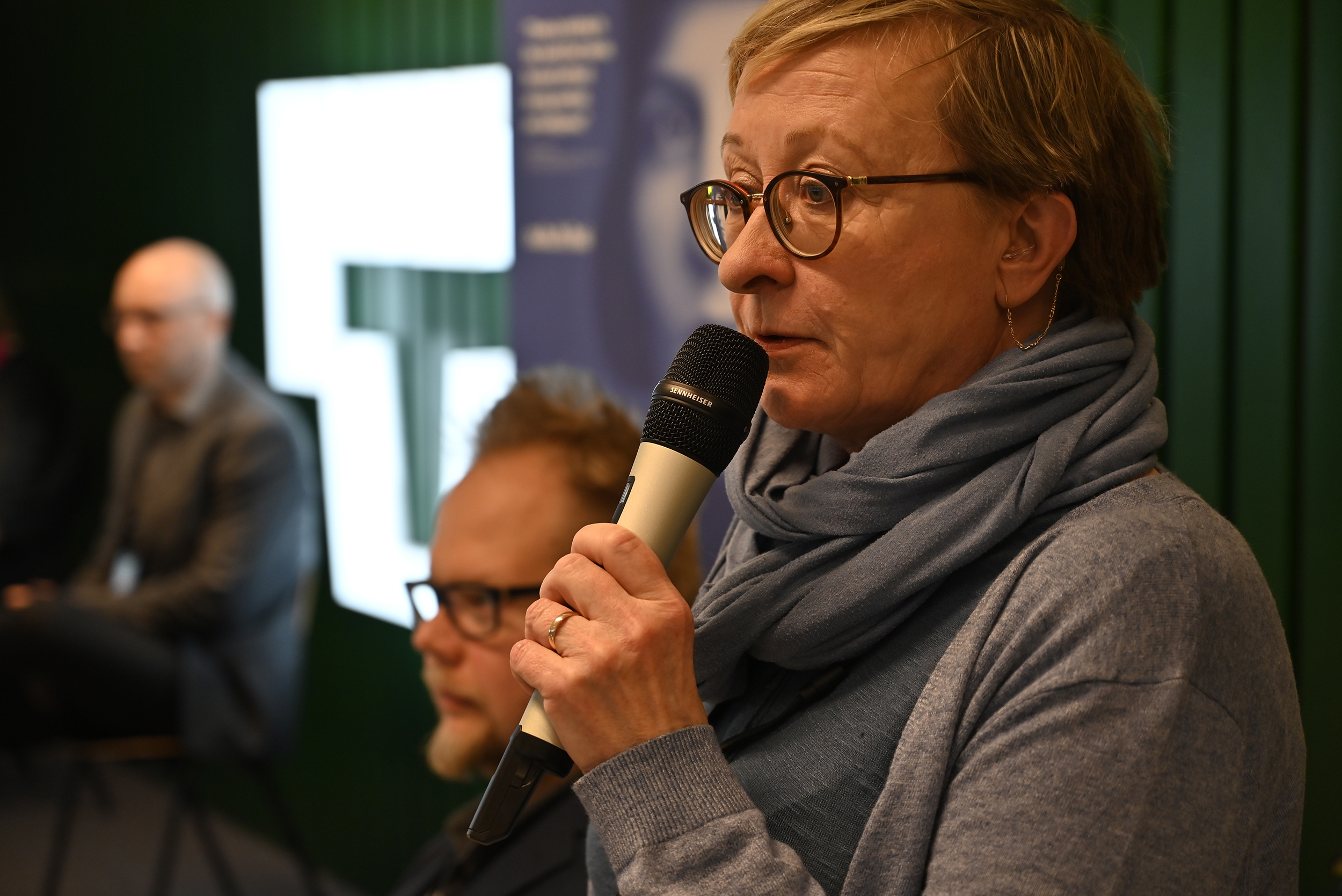
Leena Suopajärvi from the University of Lapland. Photo: Minna Kilpeläinen
"We visualise the distribution of benefits and harms through different dimensions. From the viewpoint of the communities, we map out which elements, things, and values are the most important to them. The natural landscapes, social bonds and what are the key issues in terms of the preservation and existence of that community," continued Lempinen.
The project implements a questionnaire that could be used as a universal template in the countries participating in the project.
"The starting point is that the local communities themselves can understand the desired future and the sustainability that is important and essential for that locality. We will go through that locality to look at these questions. In this project, too, there are so many different settlements, many different countries and many kinds of mineral exploration areas that it is extremely important to be location sensitive. The answers stem from the people," Suopajärvi explained.
The aim is to increase the awareness of critical raw materials
The AGEMERA project is not launching new mining operations in Europe or Zambia. However, with the help of new geological information and novel mineral exploration methods, the aim is to bring information to citizens, consumers, decision-makers and industry about the potential for the occurrence of critical raw materials in the project's target areas in Finland, Bosnia-Herzegovina, Spain, Bulgaria, Poland and Zambia.
The importance of critical raw materials for the EU and the lives of ordinary citizens is emphasised by developing educational packages for schools and universities, organising public and online events and publishing an educational online game related to critical raw materials.
Project in a nutshell
AGEMERA: Agile Exploration and Geo-modelling for European Critical Raw materials
The AGEMERA project is coordinated by the Kerttu Saalasti Institute at the University of Oulu. The consortium comprises 20 partners from 11 countries, including 10 EU countries, Bosnia-Herzegovina (a potential member candidate for the EU), and Zambia. This project has received funding under the European Union's Horizon Europe research and innovation programme under grant agreement No 101058178. The total Budget of AGEMERA is 7.5 million euros. The project duration is 1.8.2022 – 31.7.2025.
Project leader: Jari Joutsenvaara, University of Oulu, Kerttu Saalasti Institute, Finland
jari.joutsenvaara@oulu.fi, +358 40 556 9396
Project manager Eija-Riitta Niinikoski, University of Oulu, Kerttu Saalasti Institute,
Finland
eija-riitta.niinikoski@oulu.fi, +358 400
919310
The project consortium
Organisation / Short / Type / Country
University of Oulu, UO, Academic, Finland
University of Lapland, UL, Academic, Finland
University of Zagreb, UZG, Academic, Croatia
University of Zambia IWRM Centre, UNZA, Academic, Zambia
Tallinn University of Technology, TT, Academic, Estonia
Geological Institute of Bulgarian Academy of Sciences, BAS, Academic, Bulgaria
CSIC, CSIC, Research, Spain
Technische Universität Bergakademie Freiberg, TUBAF, Academic, Germany
KGHM Cuprum Research & Development Centre, CUP, Research, Poland
Lithica, LITH, SME, Spain
Radai, RAD, SME, Finland
Muon Solutions, MUON, SME, Finland
OPT/NET, OPT, SME, Netherlands
Geonardo Environmental Solutions, GEO, SME, Hungary
Latitude 66 Cobalt, LAT, Industrial, Finland
Bauxite Mines Jajce, RBJ, Industrial, Bosnia-Herzegovina
Bauxite Mines Posušje, RBP, Industrial, Bosnia-Herzegovina
MATSA, MATSA, Industrial, Spain
Assarel Medet, ASSAR, Industrial, Bulgaria
KGHM Polska Miedź, KGHM, Industrial, Poland
Disclaimer
Funded by the European Union. Views and opinions expressed are, however, those of the author(s) only and do not necessarily reflect those of the European Union or European Commission. Neither the European Union nor the European Commission can be held responsible for them.


